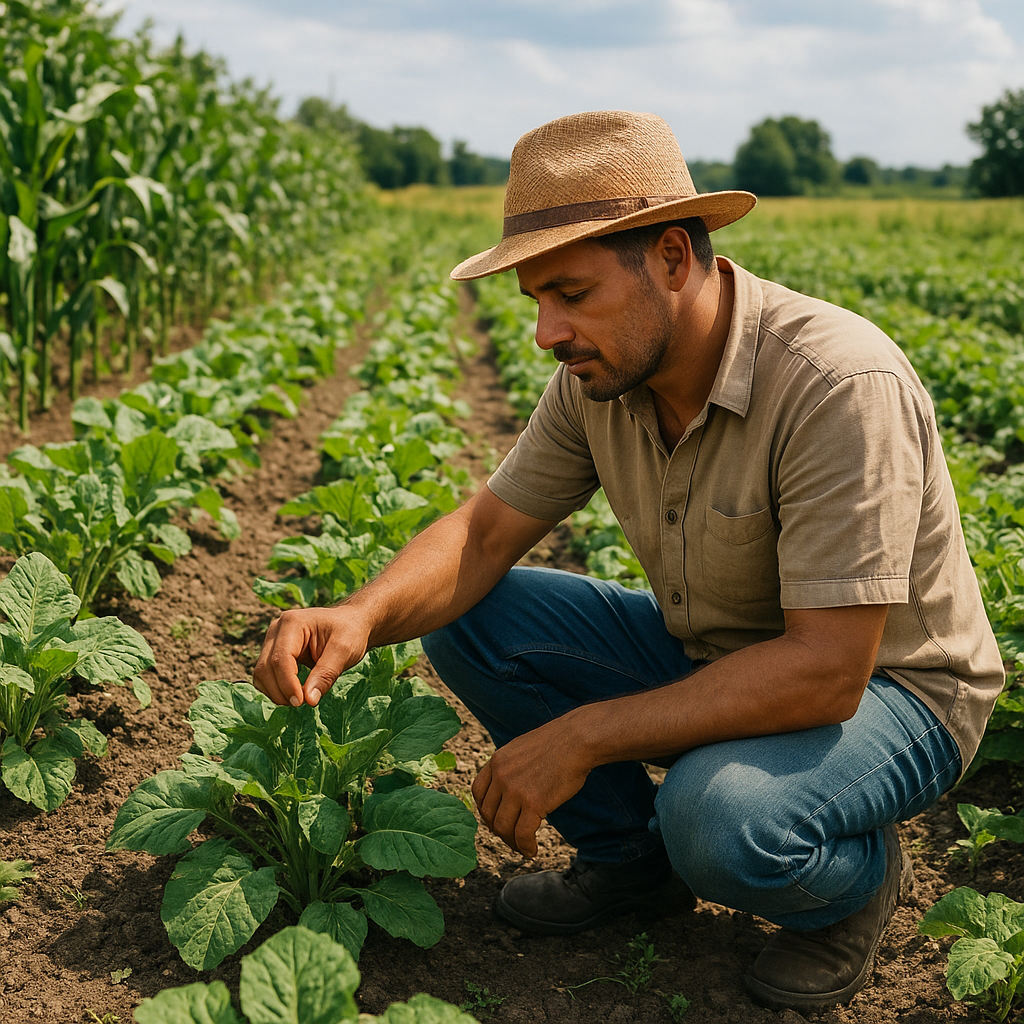
Effective agriculture is rooted in a balance between environmental stewardship and practical on-farm strategies. Embracing innovative methods can boost productivity while conserving resources and enhancing long-term viability. This article explores key practices that foster a sustainable and resilient agricultural system.
Enhancing Soil Health
Healthy soil is the foundation of a productive farm. Without fertile ground, crops and pastures struggle to provide adequate nutrients to plants and livestock. Implementing practices that replenish and protect soil structure leads to higher yield potential and improved water retention.
- Cover Cropping: Planting cover crops such as clover, vetch, or rye during fallow periods helps prevent erosion, suppresses weeds, and adds organic matter when tilled back into the soil.
- Reduced Tillage: Minimizing soil disturbance preserves the soil’s natural aggregates, encourages microbial activity, and decreases carbon loss.
- Composting: Applying well-matured compost builds soil organic matter, enhances cation exchange capacity, and supports beneficial microorganisms.
- Soil Testing: Regular analysis of pH, macro- and micronutrients, and organic matter levels informs targeted amendments such as lime or gypsum applications.
By fostering a thriving below-ground community of bacteria, fungi, and earthworms, farmers can improve ecosystem services and build resilience against drought or heavy rains. Integrating these practices also helps sequester carbon, contributing to climate change mitigation efforts.
Optimizing Water and Irrigation
Water scarcity and erratic weather patterns make efficient irrigation essential. Proper water management maximizes crop performance while conserving a precious resource. Tailored irrigation strategies can drastically reduce waste and energy costs.
- Drip Irrigation: Precision application to root zones cuts evaporation losses and lowers disease risk by keeping foliage dry.
- Soil Moisture Sensors: Utilizing probes or tensiometers provides real-time data, ensuring irrigation occurs only when soil moisture falls below optimal thresholds.
- Rainwater Harvesting: Collecting runoff from roofs or fields into storage ponds offers an alternative supply during dry spells.
- Mulching: Organic mulches like straw or wood chips reduce surface evaporation and moderate soil temperatures.
Scheduling irrigation based on crop stage—establishment, flowering, or grain fill—promotes optimal growth while avoiding overwatering. Combining these tactics with climate-smart forecasting tools can lead to a more efficient allocation of water resources.
Integrating Crop Diversity
Diversity in cropping systems not only spreads risk but also enhances farm productivity. By rotating and intercropping various species, farmers harness natural processes to manage soil fertility, pests, and diseases.
- Crop Rotation: Alternating legumes, cereals, and brassicas breaks pest lifecycles, replenishes nitrogen, and reduces pathogen buildup.
- Intercropping: Growing compatible species side by side—such as maize with beans—optimizes space and fosters mutual benefits like pest deterrence and improved biodiversity.
- Agroforestry: Incorporating trees and shrubs within fields provides shade, windbreaks, and additional sources of fruit, nuts, or timber.
- Green Manures: Fast-growing cover crops turned into the soil supply organic matter and nutrients ahead of the next planting.
These practices create a more complex biodiversity framework, enhancing pollinator habitat and natural predator populations. Diverse systems also help maintain steady income streams by reducing reliance on a single commodity.
Sustainable Pest and Disease Management
Relying solely on chemical inputs for pest control can lead to resistance, environmental harm, and market restrictions. Adopting integrated approaches preserves natural balances and supports long-term crop health.
- Biological Control: Introducing beneficial insects such as ladybugs or parasitic wasps curbs aphid and caterpillar populations naturally.
- Cultural Practices: Sanitation—removing infected debris—and crop rotation reduce pathogen reservoirs in the field.
- Resistant Varieties: Planting cultivars bred for disease or pest tolerance lowers the need for repeated chemical treatments.
- Targeted Chemical Use: When necessary, apply pesticides or fungicides based on threshold levels and local scouting data to minimize overapplication.
Complementing these tactics with pheromone traps or sticky cards enhances monitoring accuracy. By combining multiple strategies, farmers can sustainably manage threats without compromising environmental integrity.
Innovations in Livestock Management
Integrating animals into crop systems offers benefits such as natural forage utilization, manure recycling, and diversified income. Modern livestock systems emphasize animal welfare, environmental stewardship, and technology adoption.
- Rotational Grazing: Moving herds between paddocks allows pasture regrowth, prevents overgrazing, and distributes manure evenly.
- Precision Feeding: Tailoring rations to nutritional requirements reduces waste and optimizes growth rates or milk production.
- Manure Management: Composting or anaerobic digestion transforms manure into valuable fertilizer or biogas, reducing greenhouse gas emissions.
- Health Monitoring: Wearable sensors, electronic identification, and remote surveillance enable early detection of illness and improve overall herd performance.
Leveraging technology such as mobile apps for record-keeping and drones for pasture assessment streamlines decision-making. Combining livestock with cropping operations creates a holistic farm ecosystem where each component supports the others.

